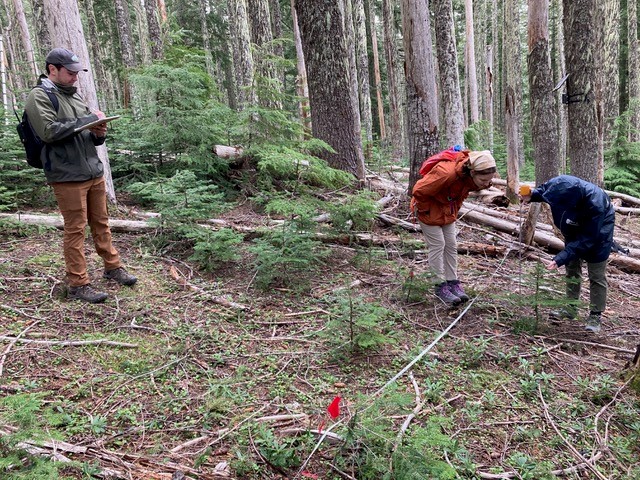An ecotone is an area of transition between ecological communities. Todd Lookingbill, a professor of geography at the University of Richmond, has been studying the ecotone between western hemlock and true fir forests in Oregon’s Cascade mountains for more than 20 years. Since first mapping all trees in five large plots distributed from Lookout to Carpenter ridges within the HJ Andrews Experimental Forest in 2002, Todd and his student research teams have been returning regularly to remap tree seedlings and monitor vegetation dynamics. In 2013, they added ground-level temperature sensors and time lapse cameras to the plots to monitor snowpack. Todd’s research goal is to understand how environmental conditions such as temperature, snowpack duration and soil moisture relate to forest dynamics in these ecotones, which may be the most sensitive areas of the landscape to environmental change. The information feeds into a model that provides insight into potential forest response to environmental change such as global climate change scenarios. While the tree seedling composition in the old-growth plots that Todd is monitoring has so far remained relatively consistent over the past 20 years, fire imposes rapid changes in forest structure and environmental conditions, and may accelerate vegetation response to a changing climate. Four of the ecotone plots are within the burn perimeter and it is likely that all five will experience the Lookout Fire disturbance.
First posted August 29, 2023

